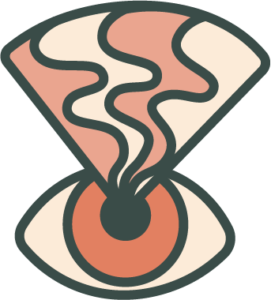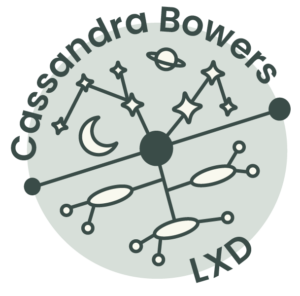My Approach to LXD
What is Learning Experience Design (LXD)?
Learning Design // Learning Experience Design // Instructional Design // Educational Design
These are all terms that are generally used interchangeably to describe someone who designs educational materials, usually in a digital context.
As a job title, these terms can all mean very different things depending on the specific project – building a curriculum, designing infographics, creating educational video content, making online modules – the list goes on!
I chose to use learning experience designer to describe myself for a simple reason: the experience of the learner is my priority.
I don’t just want to take a bunch of information and copy-paste it into an educational platform. I am passionate about gathering and synthesizing information using data-driven strategies to craft a positive and meaningful educational experience for my learning audience.
My LXD Values
While studying for my MA in Learning Design and Technology, one of my goals was to develop my own structured approach to designing learning experiences. Over time, I whittled it down to six values that I find most important in defining my approach to LXD. Below, I’ve listed these values along with brief descriptions of how I define these terms.

Engagement
Feeling connected to the learning process. Being appropriately challenged, and wanting to learn more.

Inclusivity
Making all learners feel welcome and safe. Building trust and meeting students where they are.

Artistry
Valuing the human element of a learning experience. Embracing storytelling to guide use of design elements. Crafting cohesive, compelling learning experiences.

Accessibility
Providing different ways to access learning materials. Giving people with different strengths and needs equitable opportunities to learn.

Agency
Learners feel confident in their capabilities and are given opportunities to choose how to engage with the learning experience.

Purpose
When the definition of success and provided feedback create a meaningful experience for the learner.
Collaborative Approach
My background in theatre taught me a lot about the value of creative collaboration, which has served me well in my educational career. Here are a few of my most important tools:
Empathy
Effectively working as a creative team requires people to be vulnerable: trying new things, sharing their thoughts, and changing their perspectives. When collaborating to build a new learning solution, I find it critical to use empathy to appreciate others’ strengths and consider their needs.
Curiosity
Every learner, educational setting, and learning experience is different. By cultivating curiosity, it’s easier to be agile and flexible when solving new problems. I always strive to explore new perspectives and ideas, learn from them, and adapt.
Efficacy
When approaching a new project, I ask myself these questions:
- What are the most effective pedagogical strategies, design frameworks, and/or digital tools for this specific team and context?
- What is the intended outcome of this learning experience for both the learners and larger organization?
- What is the most relevant and actionable data I can collect within this learning experience to make sure the intended outcome is reached?
Key Design Frameworks
Here, I’ve consolidated some of the LXD frameworks that I find most useful in my work.
Universal Design for Learning
Universal Design for Learning (UDL) is a framework to improve and optimize teaching and learning for all people based on scientific insights into how humans learn.
Web Content Accessibility Guidelines
Developed by the W3C Web Accessibility Initiative, WCAG are international standards on how to make web content more accessible to people with disabilities.
Distinct Belonging Framework
Developed by the Othering & Belonging Institute (OBI), this framework includes a set of principles and practices that can root out structural inequality and exclusion of all kinds.
ARCS Model of Motivation
Created by John Keller, ARCS stands for Attention, Relevance, Confidence, and Satisfaction. This framework provides strategies to improve learning experiences by increasing learner motivation.
Design Thinking Framework
Created by the Design Institute at Stanford University, this framework involves five phases: Empathize, Define, Ideate, Prototype and Test. Design Thinking’s non-linear, iterative design process is extremely useful in tackling ill-defined or unknown problems.
Human-Centered Design
Human-centered design is a an alternative to user experience design. This framework focuses on empathizing with the audience you’re designing for, understanding the root issues at play, and making small, iterative steps to improve the system.
Appreciative Inquiry
This framework assumes that every human system has elements that are already. working well, and focuses on positive inquiry to further emphasize and build upon those strengths.
Double-Diamond Design
In this framework, the two diamonds represent the process of exploring an issue more widely or deeply (divergent thinking) and then taking focused action (convergent thinking).
Community of Inquiry
The Community of Inquiry is a constructivist framework that helps create deep and meaningful learning experiences by considering three concepts: the social, cognitive, and teaching presences.
